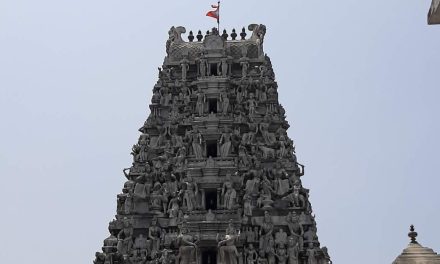In the realm of ancient Indian philosophy and spirituality, the Upanishads hold a revered place. Among these profound texts is the Paramahamsa Upanishad, a source of timeless wisdom and inspiration for yogis and seekers on the path of self-realization. This sacred scripture, though relatively lesser-known compared to some other Upanishads, offers profound insights into the nature of reality, the self, and the ultimate goal of human existence.
The Essence of Paramahamsa Upanishad
The Paramahamsa Upanishad is a short but potent text consisting of just 20 verses. Despite its brevity, it encapsulates the essence of spiritual knowledge and is considered a jewel among the Upanishads. The title itself is significant; “Paramahamsa” refers to the highest stage of spiritual realization, symbolizing the one who has transcended the limitations of the material world and attained union with the divine.
Transcending Material Attachments
One of the central themes of the Paramahamsa Upanishad is the importance of transcending material attachments. It emphasizes that the seeker should develop detachment from worldly possessions and desires. This detachment does not imply renunciation of the world but rather a mental and spiritual freedom from the chains of attachment. Yogis and seekers are encouraged to cultivate a sense of non-attachment to the external world and to seek the eternal truth within.
Meditation and Contemplation
Meditation and contemplation are key practices advocated in the Paramahamsa Upanishad. It underscores the significance of turning one’s attention inward to explore the depths of consciousness. The Upanishad guides aspirants in the art of meditation, helping them tap into their innermost selves. Through meditation, seekers can uncover the eternal truth that resides within each being.
The Quest for Self-Realization
At its core, the Paramahamsa Upanishad is a guide on the journey to self-realization. It teaches that the ultimate goal of human life is to realize the true nature of the self (Atman) and understand its oneness with the Supreme Reality (Brahman). This realization is not merely an intellectual concept but a profound experiential understanding that transcends words and thoughts.
Yogis and seekers can draw immense inspiration from the Upanishad’s teachings on self-realization. It reminds them that the path to enlightenment requires inner exploration, self-inquiry, and a deep connection with the divine. By delving into the depths of their consciousness, individuals can uncover the divine spark within and experience a sense of oneness with the universe.
The Guru-Disciple Relationship
The Paramahamsa Upanishad also underscores the importance of the guru-disciple relationship. It recognizes the guru (spiritual teacher) as a guiding light on the path to spiritual awakening. Seekers are encouraged to approach a qualified guru to receive spiritual guidance and knowledge. This relationship is seen as essential for the transmission of the profound wisdom contained in the Upanishad.
Relevance in the Modern World
While the Paramahamsa Upanishad is an ancient text, its teachings remain profoundly relevant in the modern world. In a fast-paced society filled with material distractions and stress, its message of inner peace, self-realization, and detachment resonates deeply with those seeking meaning and purpose.
In today’s world, where many are on a quest for spiritual fulfillment, the Upanishad serves as a timeless guide. Yogis and seekers can find solace in its teachings, as they offer a path to inner serenity and a deeper understanding of the self. In an age where superficiality often prevails, the Upanishad encourages individuals to explore the depths of their being and connect with the eternal truth.
The Paramahamsa Upanishad, though compact in size, is a profound source of inspiration for yogis and seekers. Its teachings on detachment, meditation, self-realization, and the guru-disciple relationship provide valuable guidance for those on the spiritual path. As individuals navigate the complexities of modern life, this ancient Upanishad offers a timeless roadmap to inner peace, self-discovery, and the realization of the divine within. By delving into its wisdom, yogis and seekers can draw inspiration to lead a life of purpose, meaning, and spiritual fulfillment.
Through the practice of yoga and meditation, one can gradually overcome ignorance and realize the true nature of reality. One can see that the individual soul is not separate from Brahman, but is one with the Absolute.
The Paramahansa Upanishad is a powerful and inspiring text that has been of great benefit to yogis and seekers throughout the centuries. It is a reminder that the ultimate reality is within us, and that we can all achieve liberation through the practice of yoga and meditation.
In addition to the teachings on yoga and meditation, the Paramahansa Upanishad also contains a number of other insights into the nature of reality. For example, the Upanishad teaches that the universe is an expression of Brahman, and that everything in the universe is ultimately interconnected. The Upanishad also teaches that the goal of life is to realize our true nature, which is one with Brahman.





